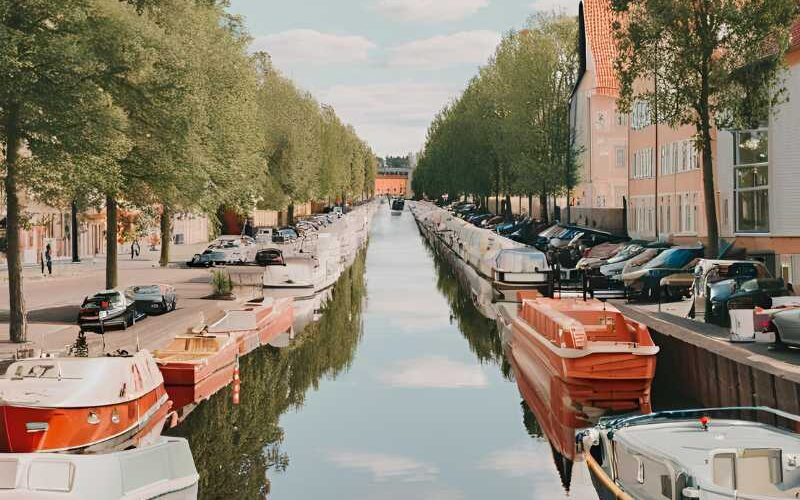Göta Canal is one of Sweden’s most famous and historically significant waterways. The canal stretches over 190 kilometers from Sjötorp by Lake Vänern to Mem by the Baltic Sea. Göta Canal is part of the larger waterway that connects Sweden’s east and west coasts, along with the Trollhätte Canal and Göta River. Built between 1810 and 1832, the canal has played an important role in Sweden’s history and is today a popular tourist attraction.
Background and History
The idea of building a canal through Sweden to connect Lake Vänern with the Baltic Sea dates back to the 16th century. However, it was not until the early 19th century that the plans began to materialize. Under the guidance of Scottish engineer Thomas Telford and led by Baltzar von Platen, the construction of Göta Canal began in 1810. The canal was completed in 1832 after 22 years of hard work by approximately 58,000 Swedish soldiers and workers.
The canal was originally intended to improve Sweden’s defense and trade by creating a safe internal transport route that avoided the dangerous waters around Denmark’s coast. During the 19th century, the canal played an important role in transporting goods and passengers. However, its significance declined with the rise of railways and cars in the 20th century.
Construction and Engineering
Göta Canal is an impressive engineering feat with a total of 58 locks and 47 bridges. The canal was built by hand using simple tools and horse-drawn carts. The greatest challenge during construction was managing the significant elevation differences along the canal, which required the construction of many locks to enable the passage of vessels.
The locks, mostly built of stone, are one of the canal’s most characteristic features. The Berg Canal, which passes through Berg, is one of the most impressive sections of the canal, with its many locks managing a height difference of 18.8 meters over a distance of 3.2 kilometers.
Impact on Sweden’s Economy and Culture
Göta Canal has had a significant impact on Sweden’s economy and culture. During the 19th century, the canal was an important transport route for goods such as grain, iron, and timber. The canal contributed to the industrialization of Sweden by facilitating the transportation of raw materials and finished products between the inland and the coast.
Culturally, the canal has inspired literature, art, and film. It is a symbol of Swedish engineering and perseverance, and its history is filled with stories about the people who built and worked on the canal. The canal has also become part of Sweden’s cultural heritage and a popular tourist attraction that draws visitors from all over the world.
Göta Canal as a Tourist Attraction
Today, Göta Canal is one of Sweden’s most popular tourist destinations. Every year, the canal is visited by thousands of people who want to experience its scenic surroundings and historical environments. Tourists can enjoy the canal in various ways, including boat tours, cycling, and hiking along the picturesque canal banks.
There are several well-known attractions along the canal, including the famous lock staircase in Berg, the charming lock area in Borensberg, and the idyllic small town of Söderköping. Many visitors choose to take a cruise along the canal, where they can enjoy the beautiful nature and the tranquil atmosphere.
Preservation and Future
Göta Canal is not only a historical treasure but also an important part of Sweden’s cultural heritage. Preservation efforts are ongoing to ensure that the canal and its surroundings are maintained for future generations. Göta Canal Company, which owns and manages the canal, continuously works on restoration and maintenance to preserve the canal’s functionality and beauty.
The future of Göta Canal looks bright, with increasing interest in sustainable tourism and cultural heritage. The canal continues to attract visitors who want to experience a part of Sweden’s history and nature. By combining tradition with modern technology and sustainability, Göta Canal can continue to be a living and thriving part of Sweden’s culture and economy.
